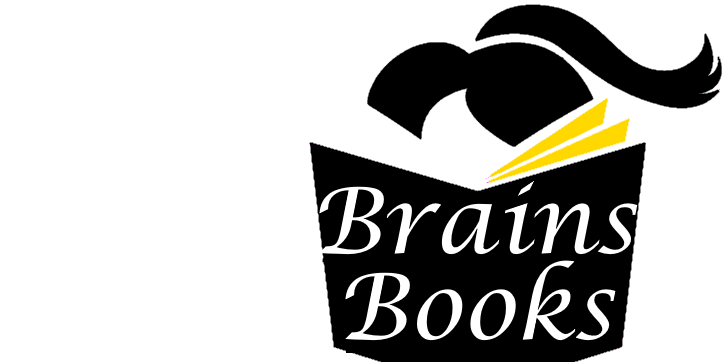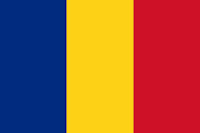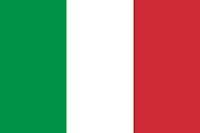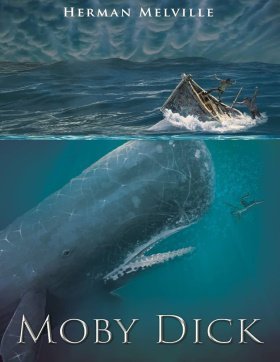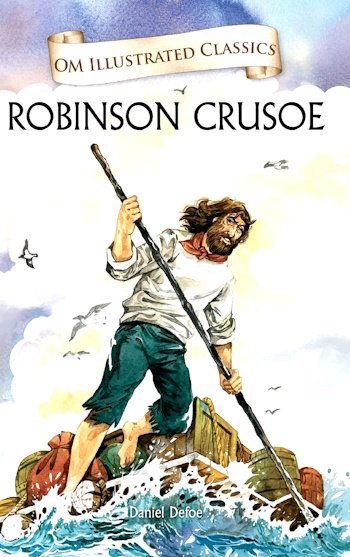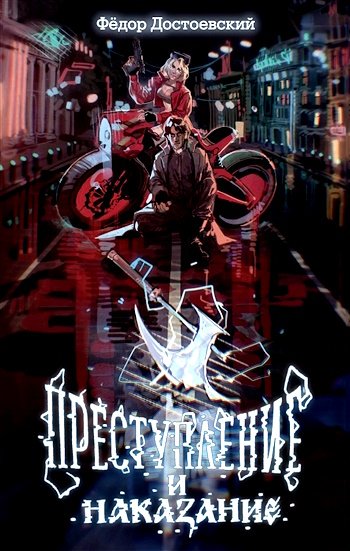“Excuse me for running after you, Don Sebastian; but may I also beg that you will be particular in procuring the largest sized Evangelists you can.”
“is is the priest, he brings you the Evangelists,” said Don Sebastian, gravely, returning with a tall and solemn figure.
Let me remove my hat. Now, venerable priest, further into the light, and hold the Holy Book before me that I may touch it“.
So help me Heaven, and on my honor the story I have told ye, gentlemen, is in substance and its great items, true. I know it to be true; it happened on this ball; I trod the ship; I knew the crew; I have seen and talked with Steelkilt since the death of Radney. e ancient whale-cry upon first sighting a whale from the mast- head, still used by whalemen in hunting the famous Gallipagos terrapin.
CHAPTER LII.
OF THE MONSTROUS
PICTURES OF WHALES
I shall ere long paint to you as well as one can without canvas, something like the true form of the whale as he aually appears to the eye of the whaleman when in his own absolute body the whale is moored alongside the whale-ship so that he can be fairly stepped upon there. It may be worth while, therefore, previously to advert to those curious imaginary portraits of him which even down to the present day confidently challenge the faith of the landsman. It is time to set the world right in this matter, by proving such piures of the whale all wrong.
It may be that the primal source of all those piorial delusions will be found among the oldest Hindoo, Egyptian, and Grecian sculptures. For ever since those inventive but unscrupulous times when on the marble panellings of temples, the pedestals of statues, and on shields, medallions, cups, and coins, the dolphin was drawn in scales of chain-armor like Saladin’s, and a helmeted head like St. George’s; ever since then has something of the same sort of license prevailed, not only in most popular piures of the whale, but in many scientific presentations of him.
Now, by all odds, the most ancient extant portrait anyways purporting to be the whale’s, is to be found in the famous cavern-pagoda of Elephanta, in India.
e Brahmins maintain that in the almost endless sculptures of that immemorial pagoda, all the trades and pursuits, every conceivable avocation of man, were pre-figured ages before any of them aually came into being. No wonder then, that in some sort our noble profession of whaling should have been there shadowed forth. e Hindoo whale referred to, occurs in a separate department of the wall, depiing the incarnation of Vishnu in the form of Leviathan, learnedly known as the Matse Avatar. But though this sculpture is half man and half whale, so as only to give the tail of the latter, yet that small seion of him is all wrong. It looks more like the tapering tail of an anaconda, than the broad palms of the true
whale’s majestic flukes.
But go to the old Galleries, and look now at a great Christian painter’s portrait of this fish; for he succeeds no better than the antediluvian Hindoo. It is Guido’s piure of Perseus rescuing Andromeda from the sea- monster or whale. Where did Guido get the model of such a strange creature as that? Nor does Hogarth, in painting the same scene in his own “Perseus Descending”, make out one whit better. e huge corpulence of that Hogarthian monster undulates on the surface, scarcely drawing one inch of water. It has a sort of howdah on its back, and its distended tusked mouth into which the billows are rolling, might be taken for the Traitors’ Gate leading from the ames by water into the Tower. en, there are the Prodromus whales of the old Scotch Sibbald, and Jonah’s whale, as depied in the prints of old Bibles and the cuts of old primers. What shall be said of these? As for the book-binder’s whale winding like a vine-stalk round the stock of a descending anchor —as stamped and gilded on the backs and title-pages of many books both old and new—that is a very piuresque but purely fabulous creature, imitated, I take it, from the like figures on antique vases. ough universally denominated a dolphin, I nevertheless call this book-binder’s fish an attempt at a whale; because it was so intended when the device was first introduced. It was introduced by an old Italian publisher somewhere about the th century, during the Revival of Learning; and in those days, and even down to a comparatively late period, dolphins were popularly supposed to be a species of the Leviathan.
In the vignettes and other embellishments of some ancient books you will at times meet with very curious touches at the whale, where all manner of spouts, jets d’eau, hot springs and cold, Saratoga and Baden-Baden, come bubbling up from his unexhausted brain. In the title-page of the original edition of the “Advancement of Learning” you will find some curious whales.
But quitting all these unprofessional attempts, let us glance at those piures of Leviathan purporting to be sober, scientific delineations, by those who know. In old Harris’s colleion of voyages there are some plates of whales extraed from a Dutch book of voyages, A. D. , entitled “A Whaling Voyage to Spitzbergen in the ship Jonas in the Whale, Peter Peterson of Friesland, master.” In one of those plates the whales, like great rafts of logs, are represented lying among ice-isles, with white bears running over their living backs. In another plate, the prodigious blunder is made of representing the whale with perpendicular flukes.
en again, there is an imposing quarto, written by one Captain Colnett, a Post Captain in the English navy, entitled “A Voyage round Cape Horn into the South Seas, for the purpose of extending the Spermaceti Whale Fisheries.” In this book is an outline purporting to be a “Piure of a Physeter or Spermaceti Whale, drawn by scale from one killed on the coast of Mexico, August, , and hoisted on deck.”
I doubt not the captain had this veracious piure taken for the benefit of his
marines. To mention but one thing about it, let me say that it has an eye which applied, according to the accompanying scale, to a full grown Sperm Whale, would make the eye of that whale a bow-window some five feet long. Ah, my gallant captain, why did ye not give us Jonah looking out of that eye!
Nor are the most conscientious compilations of Natural History for the benefit of the young and tender, free from the same heinousness of mistake. Look at that popular work “Goldsmith’s Animated Nature”. In the abridged London edition of
, there are plates of an alleged “whale” and a “narwhale”. I do not wish to seem inelegant, but this unsightly whale looks much like an amputated sow; and, as for the Narwhale, one glimpse at it is enough to amaze one, that in this nineteenth century such a hippogriff could be palmed for genuine upon any intelligent public of schoolboys.
en, again, in , Bernard Germain, Count de Lacepède, a great naturalist, published a scientific systemized whale book, wherein are several piures of the different species of the Leviathan. All these are not only incorre, but the piure of the Mysticetus or Greenland Whale (that is to say, the Right Whale), even Scoresby, a long experienced man as touching that species, declares not to have its counterpart in nature.
But the placing of the cap-sheaf to all this blundering business was reserved for the scientific Frederick Cuvier, brother to the famous Baron. In , he published a Natural History of Whales, in which he gives what he calls a piure of the Sperm Whale. Before showing that piure to any Nantucketer, you had best provide for your summary retreat from Nantucket. In a word, Frederick Cuvier’s Sperm Whale is not a Sperm Whale, but a squash. Of course, he never had the benefit of a whaling voyage (such men seldom have), but whence he derived that piure, who can tell? Perhaps he got it as his scientific predecessor in the same field, Desmarest, got one of his authentic abortions; that is, from a Chinese drawing. And what sort of lively lads with the pencil those Chinese are, many queer cups and saucers inform us.
As for the sign-painters’ whales seen in the streets hanging over the shops of oil-dealers, what shall be said of them? ey are generally Richard III. whales, with dromedary humps, and very savage; breakfasting on three or four sailor tarts, that is whaleboats full of mariners: their deformities floundering in seas of blood and blue paint.
But these manifold mistakes in depiing the whale are not so very surprising after all. Consider! Most of the scientific drawings have been taken from the stranded fish; and these are about as corre as a drawing of a wrecked ship, with broken back, would correly represent the noble animal itself in all its undashed pride of hull and spars. ough elephants have stood for their full-lengths, the living Leviathan has never yet fairly floated himself for his portrait. e living whale, in his full majesty and significance, is only to be seen at sea in unfathomable
waters; and afloat the vast bulk of him is out of sight, like a launched line-of-battle ship; and out of that element it is a thing eternally impossible for mortal man to hoist him bodily into the air, so as to preserve all his mighty swells and undulations. And, not to speak of the highly presumable difference of contour between a young sucking whale and a full- grown Platonian Leviathan; yet, even in the case of one of those young sucking whales hoisted to a ship’s deck, such is then the outlandish, eel-like, limbered, varying shape of him, that his precise expression the devil himself could not catch.
But it may be fancied, that from the naked skeleton of the stranded whale, accurate hints may be derived touching his true form. Not at all. For it is one of the more curious things about this Leviathan, that his skeleton gives very little idea of his general shape. ough Jeremy Bentham’s skeleton, which hangs for candelabra in the library of one of his executors, correly conveys the idea of a burly-browed utilitarian old gentleman, with all Jeremy’s other leading personal charaeristics; yet nothing of this kind could be inferred from any Leviathan’s articulated bones.
In fa, as the great Hunter says, the mere skeleton of the whale bears the same relation to the fully invested and padded animal as the inse does to the chrysalis that so roundingly envelopes it. is peculiarity is strikingly evinced in the head, as in some part of this book will be incidentally shown. It is also very curiously displayed in the side fin, the bones of which almost exaly answer to the bones of the human hand, minus only the thumb. is fin has four regular bone-fingers, the index, middle, ring, and little finger. But all these are permanently lodged in their fleshy covering, as the human fingers in an artificial covering. “However recklessly the whale may sometimes serve us,” said humorous Stubb one day, “he can never be truly said to handle us without mittens”.
For all these reasons, then, any way you may look at it, you must needs conclude that the great Leviathan is that one creature in the world which must remain unpainted to the last. True, one portrait may hit the mark much nearer than another, but none can hit it with any very considerable degree of exaness. So there is no earthly way of finding out precisely what the whale really looks like. And the only mode in which you can derive even a tolerable idea of his living contour, is by going a whaling yourself; but by so doing, you run no small risk of being eternally stove and sunk by him. Wherefore, it seems to me you had best not be too fastidious in your curiosity touching this Leviathan.
CHAPTER LIII.
OF THE LESS ERRONEOUS
PICTURES OF WHALES, AND
THE PICTURES OF WHALING
SCENES
In connexion with the monstrous piures of whales, I am strongly tempted here to enter upon those still more monstrous stories of them which are to be found in certain books, both ancient and modern, especially in Pliny, Purchas, Hackluyt, Harris, Cuvier, &c.. But I pass that matter by.
